Rich get poorer in Golden Globe Race
Published on September 29th, 2022
(September 29, 2022; Day 26) – A week after the 2022-23 Golden Globe Race fleet crossed the Lanzarote gate, Simon Curwen (GBR) is leading the fleet into the Doldrums through the 10th parallel, where the elastic fleet expands and compresses depending on the conditions.
It has been mainly compression as leaders Curwen and Tapio Lehtinen (FIN), who after making most of their time west of the stormy low-pressure system, are now hitting the windless wall of the Doldrums.
With the wind strengthening from the north, the back of the fleet has made good progress which has benefited Damien Guillou (FRA) in his chase back to the top, reducing the gap from 700 miles in Lanzarote to 500 today.
There were a few changes in positions for Kirsten Neuschäfer (RSA), 5th in Fuerteventura and her compatriot Jeremy Bagshaw (RSA), a close 6th then. But after spending long hours at the helm and posting the best daily average on several days at around 170 miles, had her closing on Abhilash Tomy (IND), eventually stealing 4th place from him before chasing Pat Lawless (IRL), himself catching Tapio Lehtinen (FIN), 200 miles to the east of him.
Bagshaw, who is no stranger to bold moves and options, broke away from Neuschäfer five days ago for a western route into the Cape Verde islands looking for fresh winds, which he is currently clearing, but lost three places in the process, falling from 6th to 9th place.
He is currently sailing in fresh winds 350 miles west of Elliott Smith (USA), and now has Guillou and Ian Herbert-Jones (GBR) following his track into the islands.
The doldrums are a windless belt around the equator where the NW trade winds of the northern hemisphere collide with the SE trades of the southern hemisphere. The heat forces the hot, humid air into the atmosphere where it transforms into pouring rain after cooling down.
This zone of weak, erratic winds, hot weathers, squalls, and showers was feared in the ancient times where ships could stay for weeks at a time. Today the doldrums are no longer a danger, but for the solo skippers with little outside communications, they can still play with the nerves.
Crossing the equator will be a first for many and the pinch of isolation is becoming real with several entrants sharing that they are missing family and friends. Others had quite surreal experiences such as Elliott Smith (USA) experiencing special offerings from the Saharan winds.
“It was a night of storm and lightning, and the next morning I wake up and there was dust everywhere, orange dirt, four dead birds on the deck, some of them decapitated, flying fish everywhere, grasshoppers and crickets, and then a big black nasty looking locusts as big as my thumb. This is when I realized I had left the hatch open,” Elliott said on his weekly call yesterday, sharing how big an adventure he had taken on.
Many have ongoing problems heading in the southern hemisphere: Ertan Beskardes (GBR) who experienced early electrical problems with a short-circuit and smoke, called Race Control this week reporting batteries issues, not keeping charge and that he was struggling with his power management.
He had planned to stop in Cape Verde Islands for repair and continue in Chichester Class, but later decided to soldier on through the doldrums and try to solve it. He is running on minimal power now and it is obvious the batteries have been seriously damaged. He is prepared to finish the Race without power, using his emergency solar system to recharge critical safety comms.
Guy Waites (GBR) has been working on his staysail cars and spinnaker pole issues; Arnaud Gaist (FRA) has been working on deck fittings, preserving his sails and is shocked at some of his running rigging that is chafing excessively. Elliot Smith (USA) re-positioned and re-stitched his mainsail clew, and found most luff slides on the mainsail battens broken. Ian Herbert Jones (GBR) is frustrated at being so far behind, but realizes that for him, it is all about the voyage and enjoying the journey.
All are taking advantage of the doldrums to maintain and prepare the yacht for future trade winds. They find solace in their regular HF radio session chats, comparing positions, and passing on weather information.
Meanwhile this week, Mark “Coconut” Sinclair, the popular Australian sailor decided to pull into Lanzarote and retire from the race. “I wanted to start this edition but it was a big effort to get ready and I think I am just tired. I had planned to make landfall in Cape Town and attend my son’s wedding, continuing the voyage in Chichester class, but it’s been a slow start and I am now two weeks behind schedule. I won’t be in time in South Africa, and probably not at the Hobart gate before January 31.”
Sinclair, a former Australian Navy commander and cartographer, also mentioned some medical follow-up and surgery and other pending issues since he has been away from home for ten month. He left Adelaïde in December 2021, crossing to Les Sables d’Olonne in 174 days, spending another 100 days full time without a break to get Coconut ready for the start with little time for anything else.
Meanwhile in Fuerteventura, Guy deBoer (USA) has reunited with his Tashiba 36 Spirit, which has been lifted off the rocks where he landed on September 18. Spirit’s salvage involved building a sand road for the mobile crane and the low-bed truck to get to the boat, getting the mast off and lifting the boat onto a low-bed truck.
Driving it out was easy without extra damage, but a significant amount of equipment – including the Hydrovane, Watt & See generator, winches, and other material – were stolen for a value exceeding $50,000 USD.
In Fuerteventura, a chain of solidarity formed around deBoer and his injured yacht, some local friends having found a piece of land for Spirit’s repairs. “It looks like I’m sorted, the landlord is friends with the crane operator who is ready to bring Spirit to the property and set-it up. We’re now getting the wood to build Spirit’s cradle.”
This week is all about the fleet compressing from the back as the leaders are hitting the doldrums hard, but next week should be about offerings to Neptune, and the Southern trade winds toward the next mark: Trindade Island.
Event details – Entry list – Tracker – Facebook
2022 GGR competitors:
Abhilash Tomy (43) / India / Rustler 36
Arnaud Gaist (50) / France / BARBICAN 33 MKII (long keel version)
Damien Guillou (39) / France / Rustler 36
Elliott Smith (27) / USA / Gale Force 34
Ertan Beskardes (60) / UK / Rustler 36
Guy Waites (54) / UK / Tradewind 35
Ian Herbert Jones (52) / UK / Tradewind 35
Jeremy Bagshaw (59) / South Africa / OE32
Kirsten Neuschäfer (39) / South Africa / Cape George 36
Michael Guggenberger (44) / Austria / Biscay 36
Pat Lawless (66) / Ireland / Saga 36
Simon Curwen (63) / UK / Biscay 36
Tapio Lehtinen (64) / Finland / Gaia 36 Masthead sloop
Retired
Edward Walentynowicz (68) / Canada / Rustler 36 (dropped out Sept. 8)
Guy deBoer (66) / USA / Tashiba 36 (ran aground Sept. 16)
Mark Sinclair (63) / Australia / Lello 34 (retired in Lanzarote Sept. 22)
About the 2022 Golden Globe Race
On September 4, 2022, the third edition of the Golden Globe Race started from Les Sables d’Olonne, France. Sixteen skippers will face eight months of isolation sailing 30,000 miles across five oceans solo non-stop and unassisted.
In 1968, while man was preparing to take his first steps on the moon, a mild mannered and modest young man was setting out on his own record breaking voyage of discovery. He had entered the original Golden Globe. Nine men started that first solo non-stop sailing race around the World. Only one finished. He was 29 year old Sir Robin Knox Johnston. History was made. Navigating only with a sextant, paper charts and an accurate and reliable time piece, Sir Robin navigated around the world.
In 2018, to celebrate 50 years since that first record breaking achievement, the Golden Globe Race was resurrected. It instantly gained traction with adventurers, captivated by the spirit and opportunity. Eighteen started with five finishers.
To embrace the original race, competitors must sail in production boats between 32 and 36 feet overall and designed prior to 1988 that have a full-length keel with rudder attached to their trailing edge. Additionally, sailors have limited communication equipment and can use only sextants, paper charts, wind up clocks, and cassette tapes for music.
Source: GGR


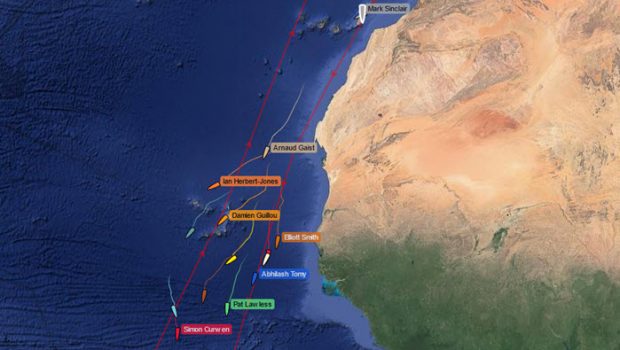

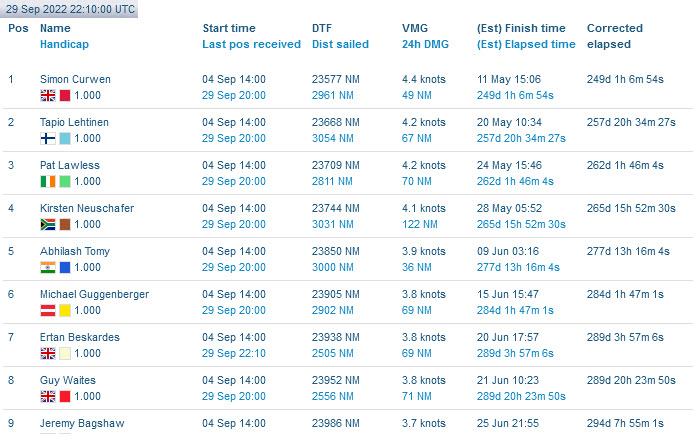

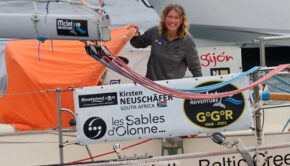
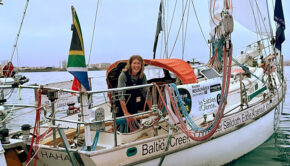
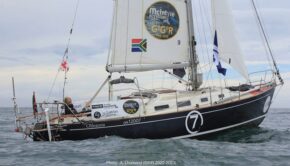
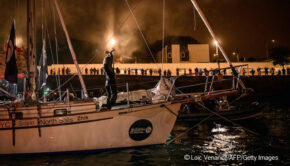
 We’ll keep your information safe.
We’ll keep your information safe.